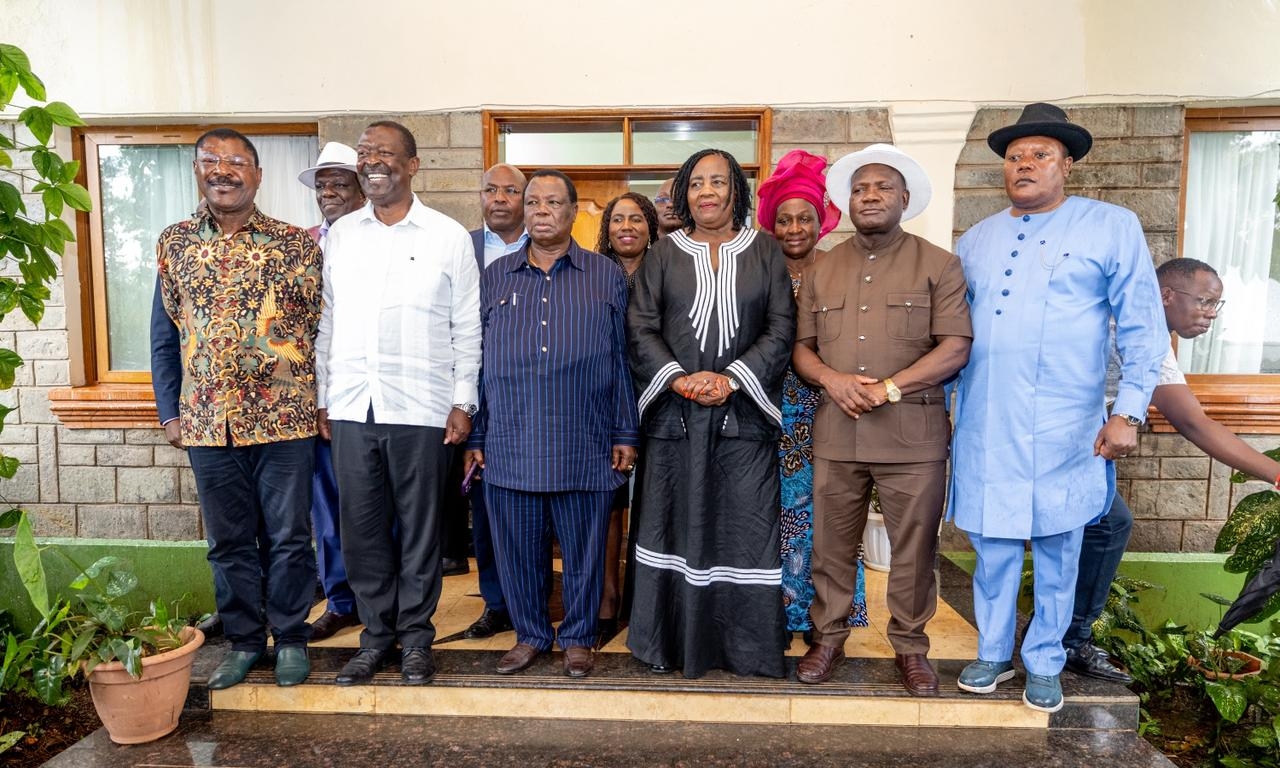Tonnes of steel lie on the ground at the Kisumu Shipyard where the construction of Kenya’s first home-built commercial vessel is ongoing.
Engineers, welders, and other experts brave the scorching sun as they put together a 1,800 tonnes capacity vessel, christened MV Uhuru II, currently at 60 per cent complete.
It is the first of its kind to be built at the shipyard whose dry dock was constructed in 1901 and had not been put into full use in post-independence due to lack of expertise.
“When our colonizers left, there was no activity since there were no skills passed to locals,” Kenya Shipyard Limited (KSL) deputy managing director Peter Muthungu explains.
The Sh2.4 billion vessel is being built by KSL, the KDF, in partnership with Dutch firm-Damen shipyards.
It is expected to be ready for sailing by April this year. There are orders to build at least three vessels at the shipyard while Uganda is constructing another two; both are expected to be ready this year.
Berthed about 200 meters away is the over 50-years old MV Uhuru I, awaiting loading of cargo for shipment to Uganda.
It was refurbished in 2019 by Kenya Railways and Kenya Defence Forces, after being grounded for 15 years.
To tap into the petroleum products transportation business, Kenya Railways constructed a new 1.8 km railway line to the Kenya Pipeline Corporation depot in Kisumu.
According to Kenya Railways, the vessel can make 10 round trips in a month between Kisumu Port and Port Bell in Uganda with the capacity to carry 22 tank wagons bringing a total of 1,100,000 litres.
To date, the ship has made 50 voyages carrying a total of 59,392.63 tonnes.
The Sh3 billion refurbished Kisumu Port reopened by President Uhuru Kenyatta in June last year is slowly picking in terms of volumes, as manufacturers and traders embrace lake transport again, after decades of dormancy in the Lake Victoria transport network.
Lake transport has cut transport costs between Kisumu and Uganda by up to 30 per cent, according to Kenya Railways which is operating MV Uhuru.
The planned increase in the number of vessels now means a higher maritime capacity in the lake, which has a catchment area covering 193,000 square kilometres in Kenya, Uganda and Tanzania, as well as parts of Rwanda and Burundi.
In addition to Kisumu, major facilities used in the regional trade are Mwanza, Musoma and Bukoba in Tanzania, and Port Bell and Jinja in Uganda.
The Kenyan government has also connected the Standard Gauge Railway to the Metre Gauge Railway at the Naivasha Inland Container Deport, allowing a seamless flow of cargo from the Port of Mombasa to Kisumu.
President Uhuru Kenyatta’s administration has further invested heavily in the region’s road network, a catalyst for increased and easy movement of farm produces and industrial goods to markets.
They include the Ahero-Kisii-Isebania road (172 kilometres) and upgraded feeders roads totalling about 77 kilometres.
The road forms part of the A1 road connecting with Tanzania, facilitating cross-border movement for passengers and cargo.
The Kisumu-Kakamega-Kitale road has also been upgraded, with several links that connect four counties and markets in Uganda and South Sudan.
Bypasses around Kisumu town have also eased movement into and around the port city.
The country's third city is back to life with investments, including in real estate and manufacturing picking up.
Its economic activities had come to a near stop during the post-election violence.
“This infrastructure is a game-changer for not only the western part of the country but the entire East African region,” government spokesperson Cyrus Oguna notes.
Increased business and industrial activity are slowly bringing back the once vibrant trade between the countries, with the annual value of trade being in excess of Sh90 billion.
Last year, Kisumu handled about 55,000 metric tonnes mainly LPG, diesel, industrial sugar, beer and other foodstuffs.
“We expect bigger volumes this year. We want to take advantage of the rehabilitated railway to move more volumes and increase trade within the Lake region,” says Michael Disi, operations manager, Kenya Railways, Kisumu.
According to a study by the East African Community (EAC), the Lake Victoria basin’s potential remains huge in the fisheries, tourism, transport and communication, water and energy, agriculture, trade and industry.
“Considering the whole basin, the potential is further extended to cover the abundant natural resources in wildlife, forestry, minerals and fertile soils,” EAC notes.
The current annual catch from the lake is estimated at 500,000 metric tonnes of fish equivalent to 1,500 metric tonnes daily.
“Earnings from the Lake’s fish catch in the region are at $400 million per year or slightly over $1 million per day,” the report notes.
Industries eying Kisumu Port
Meanwhile, several manufacturers are eying the use of Kisumu Port to increase supplies into the markets of Kenya and Uganda.
Among them is Bidco Uganda which imports crude palm oil from Malaysia for the manufacturing of vegetable oil.
“They import 60 to 80 per cent of their CPO (Crude Palm Oil) and they have expressed interest in moving their cargo through the lake,” notes Captain William Ruto, General Manager Kisumu Port.
Bamburi Cement is also keen to use the lake and its ports to move volumes into the regional markets, with a potential of 680,000 tonnes per day.
Cargo via the SGR-MGR to Kisumu will first be landing at KPA’s Kibos facility.
The movement of passengers through the Lake is expected to increase with the construction of terminals around the lake.
A proper working road, rail and lake transport system places Kenya in a pole position to remain an economic powerhouse in the region, amid increased trade with her neighbours where Uganda is the biggest regional user of the Port of Mombasa (on transit), accounting for 83.2 per cent of all goods to the hinterland.
South Sudan takes up 9.9 per cent while DR Congo, Tanzania and Rwanda account for 7.2 per cent, 3.2 per cent and 2.4 per cent respectively.
The revived railway line is expected to serve factories in Rift Valley and western Kenya and the fish industry in Kisumu, with hopes of revival and growth of installations in the region where the likes of Kisumu Cotton Mills (Kicomi) were key in the 1990s.
Kenya Breweries’ Kisumu plant, revived Rivatex East Africa and new KCC are among those expected to move volumes on a rail.
“The railway line shall increase the efficiency of movement of raw materials to industries in Rift Valley, Western and Nyanza. Additionally, it shall speed up the transportation of finished goods from the factory to the markets,” Kenya Association of Manufacturers CEO Phyllis Wakiaga notes.
The port will enhance market access in countries surrounding Lake Victoria.
“We hope to see increased volumes of goods transported through Lake Victoria, into the East African Community markets,” she added.












